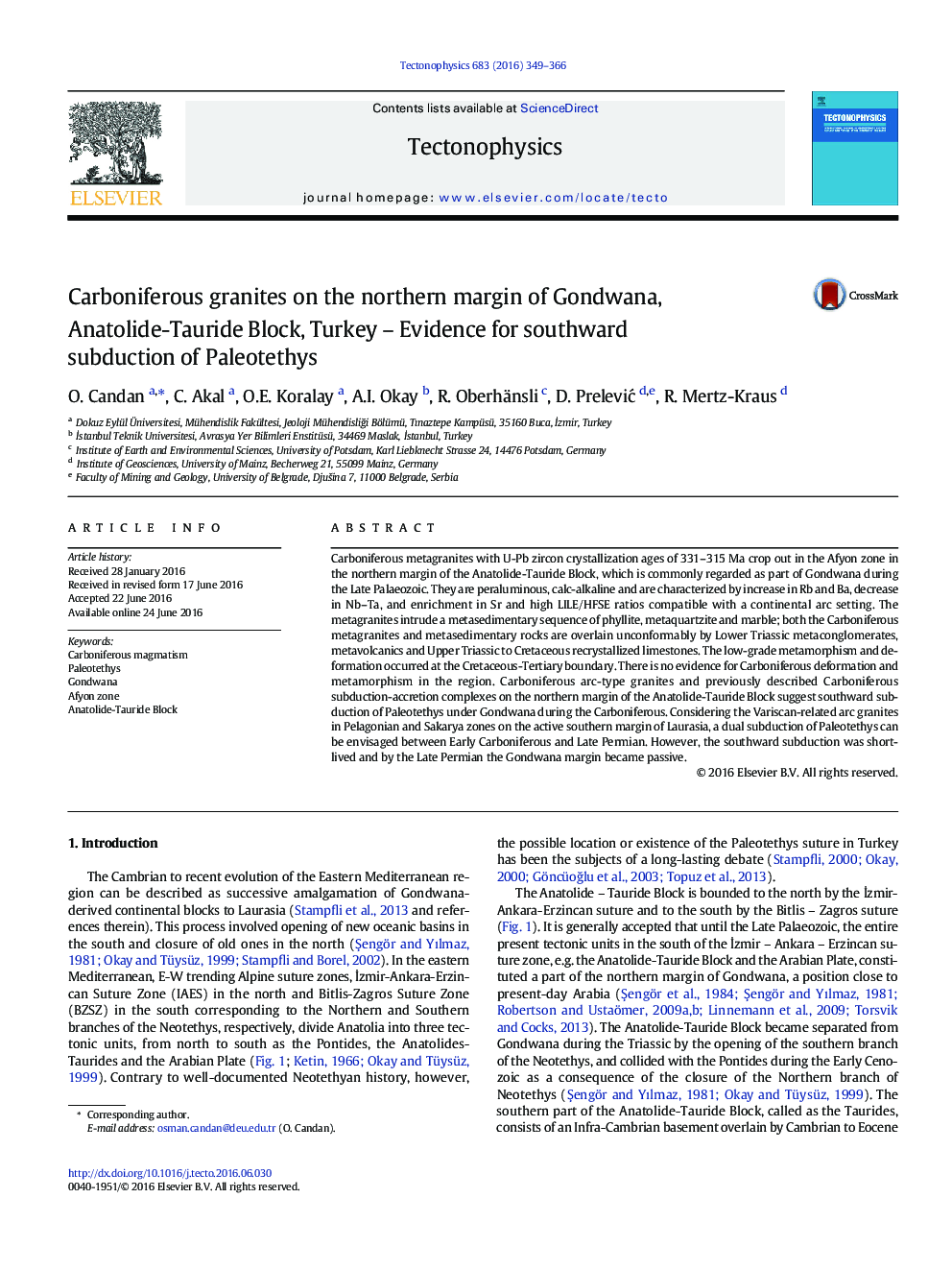| Article ID | Journal | Published Year | Pages | File Type |
|---|---|---|---|---|
| 6433392 | Tectonophysics | 2016 | 18 Pages |
â¢Carboniferous metagranites crop out in the Anatolide-Tauride Block of Turkey.â¢Arc-type granites are related with southward subduction of Paleotethys.â¢Northern active margin of Gondwana switched to a passive margin in the Late Permian.
Carboniferous metagranites with U-Pb zircon crystallization ages of 331-315Â Ma crop out in the Afyon zone in the northern margin of the Anatolide-Tauride Block, which is commonly regarded as part of Gondwana during the Late Palaeozoic. They are peraluminous, calc-alkaline and are characterized by increase in Rb and Ba, decrease in Nb-Ta, and enrichment in Sr and high LILE/HFSE ratios compatible with a continental arc setting. The metagranites intrude a metasedimentary sequence of phyllite, metaquartzite and marble; both the Carboniferous metagranites and metasedimentary rocks are overlain unconformably by Lower Triassic metaconglomerates, metavolcanics and Upper Triassic to Cretaceous recrystallized limestones. The low-grade metamorphism and deformation occurred at the Cretaceous-Tertiary boundary. There is no evidence for Carboniferous deformation and metamorphism in the region. Carboniferous arc-type granites and previously described Carboniferous subduction-accretion complexes on the northern margin of the Anatolide-Tauride Block suggest southward subduction of Paleotethys under Gondwana during the Carboniferous. Considering the Variscan-related arc granites in Pelagonian and Sakarya zones on the active southern margin of Laurasia, a dual subduction of Paleotethys can be envisaged between Early Carboniferous and Late Permian. However, the southward subduction was short-lived and by the Late Permian the Gondwana margin became passive.
Graphical abstractDownload high-res image (311KB)Download full-size image
